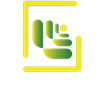Agritech Investment Trends

In recent years, agritech investment has surged, reflecting a growing recognition of the need for sustainable agricultural practices. As the global population continues to rise and climate change impacts intensify, innovative technologies are essential for ensuring food security and environmental sustainability. This blog explores current agritech investment trends, focusing on sustainability, energy efficiency, water conservation, and the financial aspects of setting up modern agricultural systems like polyhouses. Key areas such as hydroponic and indoor farming, which aim to increase food production with fewer resources, are also highlighted.
The Growing Importance of Agritech Investment
Agritech investment is crucial for modernizing agriculture and addressing the challenges posed by traditional farming methods. These investments support the development and implementation of technologies that enhance productivity while minimizing environmental impact. The main focus areas include sustainability, energy efficiency, water conservation, and innovative farming techniques.
Sustainability of Agriculture
Sustainability is at the heart of agritech investment trends. Sustainable agriculture involves practices that maintain and enhance the health of the environment while ensuring long-term agricultural productivity. This includes using resources more efficiently, reducing greenhouse gas emissions, and promoting biodiversity. Agritech solutions such as precision agriculture, which uses data and analytics to optimize crop management, are pivotal in achieving these goals. By applying inputs like water, fertilizers, and pesticides more accurately, farmers can reduce waste and environmental impact.
Energy and Efficiency
Energy efficiency is another critical focus of agritech investments. Traditional farming practices often involve high energy consumption, particularly for irrigation and greenhouse management. Agritech innovations aim to reduce this energy use through technologies like solar-powered irrigation systems, energy-efficient LED lighting, and automated climate control systems. These advancements not only lower operational costs but also reduce the carbon footprint of farming activities.
Sustainable Farmland
Creating sustainable farmland involves integrating practices that preserve soil health, optimize water use, and enhance productivity. Agritech tools such as soil sensors and drones provide real-time data on soil conditions, enabling farmers to make informed decisions. These technologies help maintain soil fertility, reduce erosion, and improve crop yields, contributing to long-term agricultural sustainability.
Conserving and Saving Water
Water conservation is a critical aspect of sustainable agriculture. Agritech solutions like drip irrigation systems, moisture sensors, and automated irrigation controls help farmers use water more efficiently. Drip irrigation, for example, delivers water directly to plant roots, minimizing evaporation and runoff. Moisture sensors provide precise data on soil moisture levels, ensuring that irrigation is applied only when necessary. These technologies significantly reduce water waste and enhance the sustainability of farming operations.
Hydroponic and Indoor Farming
Hydroponic and indoor farming are at the forefront of agritech investment trends, offering innovative solutions for food production in urban and resource-limited environments. Hydroponics involves growing plants in nutrient-rich solutions without soil, while indoor farming utilizes controlled environments to optimize growing conditions.
Hydroponic Farming
Hydroponic systems can produce higher yields in smaller spaces and use up to 90% less water compared to traditional farming. This method is particularly beneficial in areas with limited arable land or water resources. By providing plants with the exact nutrients they need, hydroponics enhances growth rates and crop quality.
Indoor Farming
Indoor farming, including vertical farming, allows for year-round production regardless of external weather conditions. Controlled environments reduce the need for pesticides and herbicides, resulting in safer and cleaner produce. Energy-efficient systems such as LED lighting and automated climate control further enhance sustainability and productivity.
Increasing Food Production with Fewer Resources
One of the primary goals of agritech investment is to increase food production using fewer resources. Technologies like precision agriculture, hydroponics, and indoor farming enable farmers to maximize yields while minimizing input costs. These methods are essential for feeding a growing global population sustainably. By optimizing resource use, farmers can achieve higher productivity with lower environmental impact, making agritech investments highly attractive.
Investment Required for a Polyhouse
Polyhouses, a type of greenhouse made from polyethylene, provide a controlled environment for growing crops, enhancing productivity and sustainability. The investment required for a polyhouse varies based on several factors, including size, location, and the level of automation.
- Size and Structure: Larger polyhouses will have higher total costs but benefit from economies of scale.
- Location: Costs vary by region due to differences in land, labor, and material prices. Government subsidies and incentives for sustainable farming can offset some initial expenses.
- Level of Automation: Basic polyhouses with manual controls are less expensive, but automated systems with climate control, irrigation, and monitoring sensors offer greater efficiency.
- Operating Costs: In addition to initial setup costs, ongoing expenses include energy, water, labor, and maintenance. However, the efficiency and productivity gains from a polyhouse often result in a favorable return on investment.
Conclusion
Agritech investment trends are shaping the future of sustainable agriculture, driving innovations that enhance productivity, energy efficiency, and resource conservation. By adopting advanced technologies, farmers can create sustainable farmland, conserve water, and increase food production with fewer resources. Hydroponic and indoor farming are promising solutions for urban and resource-constrained environments.
Investing in a polyhouse is a strategic decision that can significantly boost productivity and sustainability. While the initial investment may be substantial, the long-term benefits of higher yields, resource efficiency, and reduced environmental impact make it a worthwhile endeavor.
In conclusion, agritech investments are not merely about embracing new technologies; they represent a commitment to transforming agriculture into a more sustainable and efficient industry. These investments are essential for ensuring food security and preserving the planet for future generations
